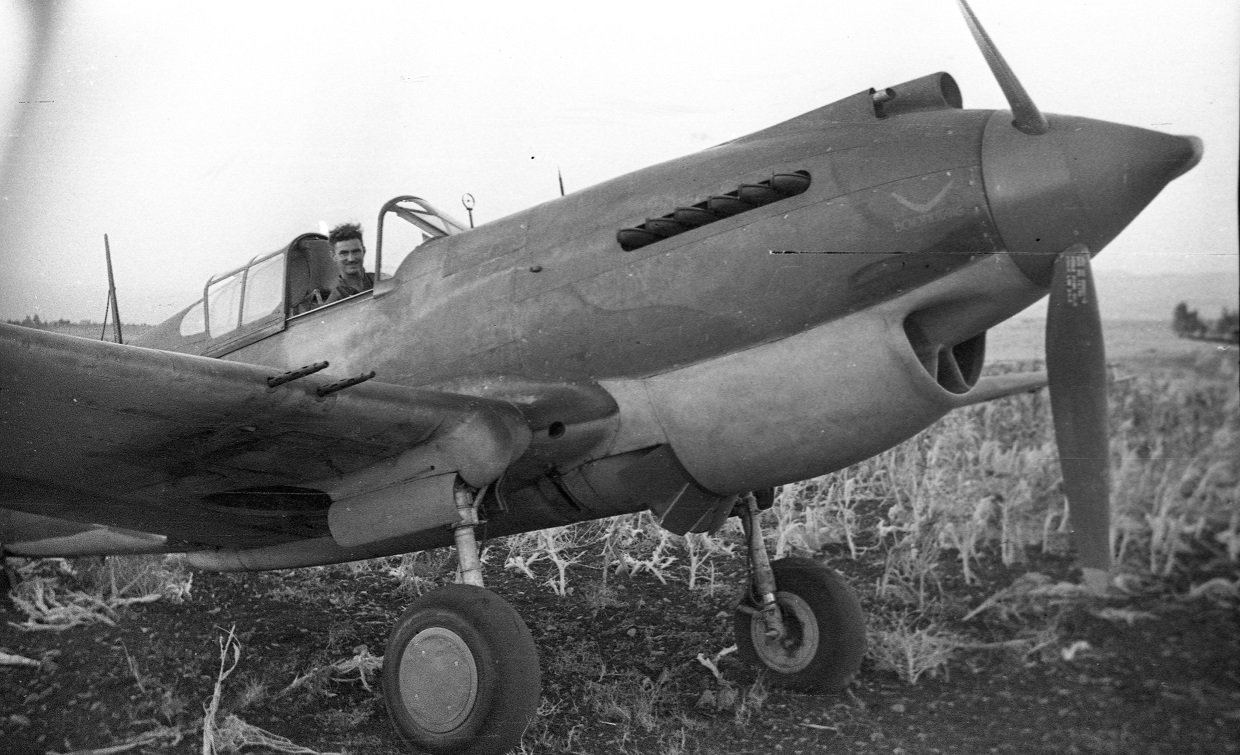
by Steve Mackenzie
Tomahawk
The Curtiss P-40 attracted the attention of foreign air forces at a very early stage in it's developement. On May 10, 1939, the French government ordered 230 export versions of the P-40 for the Armee de l'Air. The manufacturer (Curtiss) designated them as Hawk 81-A1. The Hawk 81-A1s were identical to the US P-40 except they had French instruments and equipment and were equipped with reverse movement "French-fashion" throttles, switches etc.
The first H81-A1s flew on June 6, 1940, and a few were possibly completed with French markings. However, before any could be delivered, France had capitulated. Britain agreed to take over the French order, and designated the H81-A1 'Tomahawk I' in RAF service. 140 went to the RAF with serials AH741/AH840 and AH841/AH880.
The first Tomahawk were received England in September 1940. The two 0.5-inch machine guns in the nose were retained, but they were supplemented by four wing-mounted 0.303-inch Browning machine guns (the original P-40 design had only one 0.30 cal gun in each wing). Tomahawk Is were used mainly for Army Co-operation roles within Britain. However in 1942-43 ten (AH752, AH759, AH774, AH792, AH793, AH796, AH828, AH840, AH849, AH859) went to Lagos to form 349 Sqn (along with 10 ea Mk.IIas and IIbs).
Tomahawk IIA (Model H81-A2) was generally equivalent to the US P-40B. It had protective armor and externally-covered self-sealing tanks. 110 were built for the RAF under a direct-purchase contract. . RAF serials were AH881/990. It carried two 0.30-inch machine guns in the wings in addition to the two 0.50-in guns in the fuselage. A British radio was fitted. Tomahawk IIA AH938 was transferred to Canada as an instructional airframe. AH936, 952, 965/971, 974/895, 987, 989, and 990 were delivered to the Soviet Union.
Tomahawk IIB (Model H81-A2) was generally equivalent to the US P-40C. It had four 0.303-inch Browning machine guns in the wings in addition to the two nose-mounted 0.50-in guns. Whereas the Tomahawk IIA had a British radio, the Tomahawk IIB had US equipment. The British did not like the externally sealed tanks of the Tomahawk IIA, so these were replaced by internally-sealed tanks on the Tomahawk IIB. A total of 930 of these planes were produced in four lots. RAF serials were AH991/999, AK100/570 , AM370/519 , and AN218/517. Airframes AK210/224 and AK226/241 were lost at sea in transit. Many were sent to other users, particularly the Soviet Union.
I am not as familiar with the Tomahawk details as I am with Kittyhawks. The main problem I found with the text is that Wingleader say that the IIa variant had .303 wing guns and the IIb .30 (which is the reverse of the info I can find). Tomahawk IIbs were the variant used by the RAF in North Africa (incl 3 Sqn RAAF) so I pulled up a closeup of the wing guns on one of their airframes as per attached. The cooling slots of the .303 cal guns can be clearly seen, confirming that the info in the book is incorrect.

A caption problem that I noticed is on P.27. 3 Sqn SAAF never flew the Tomahawk IIb as far as I can find. They were in the East African campaign in 1941 with Hartbees, Gladiators and Hurricanes and existed as a cadre unit back in S.Africa during 1942, no airframes being mentioned in the ORB (and there were no Tomahawks in the Union anyway). In 1943 when they moved to Egypt they equipped with Spitfires. The airframe in the photo on P.27 is wearing the 'WR' codes of 40 Sqn SAAF an Army Co-operation unit.
A final Tomahawk comment, AN325 'W' had grey codes, not Red as per the profile on P.29.
P-40 Kittyhawk
Here I am on ground where I have much stronger knowledge. I was very disappointed to see that the same old errors about RAF and Commonwealth P-40s have been repeated once again. These errors go back many decades, this would have been a chance to correct them in what will likely become a standard reference work on the type but the opportunity has been lost.
On P.33 Wingleader states that Kittyhawk Mk.I = P-40D and Kittyhawk Mk.Ia = P-40E ... sorry very wrong.
The real situation is that the designation Kittyhawk Mk.I covers all airframes paid for by the UK with Gold Bullion (before the introduction of Lend Lease). A total of 559 airframes (made up of 20 P-40D (AK571-590) and 539 P-40Es (AK591 / AK870 (280), AK871 / AK950 (80), AK951 / AK999 (49) and AL100 / AL230 (130). The designation Kittyhawk Mk.Ia was applied to airframes obtained under Lend Lease (ET100/ET519 (420), ET520/ET999 & EV100/EV699 (1080).
There were some differences. The Kittyhawk Mk.I differed from the P-40E models supplied by the USA under lend lease in a number of ways. The Kittyhawk Mk.IA as supplied had British spec equipment such as 24 volt electrical systems (USAAC airframes used 12 volt), cranked pitot tubes, formation lights ahead of the cockpit (only the first 100 airframes to US specs had these), British radios etc. The differences led to those airframes being given a different designation (Kittyhawk Mk.1A)
Note the serial numbers are as allocated during production. MANY airframes were diverted to USAAF, Australia, NZ, Canada, S.Africa, Russia and other users and never reached the RAF. Only a small minority of the Mk.Ias actually reached the RAF.
Another hoary old error which has been repeated again is the claim of some RAF airframes having only 4 wing guns ( P.57). All Merlin engined airframes used by the RAF (260 RAF and 3 RAAF) had 3 gun wings, as did all RAF airframes apart from the initial 20 P-40Ds. They were supplied with complete internal fittings for 3 guns, often only 2 were actually installed on delivery with the remaining one in a crate. The RAF installed the 3rd gun at their Air Depots when preparing them for combat.
Now some comments on various captions etc:
P.49 says Gordon Steege was commander of 94 Sqn RAF in Mar 1942 after the death of 'Imshi' Mason. No doubt this comes from http://www.historyofwar.org/air/units/RAF/94_wwII.html which is in error. The commander of 94 Sqn from 02.1942 - 05.1942 was S/Ldr Ian Neil MacDougall. Gordon Steege was otherwise occupied at the time being commander of 450 Sqn RAAF till May 1942.
P.51 the taxying aircraft I cannot identify. AK793 was only coded 'W' with 450 Sqn and that is almost certainly not a 'W' code.
P.53 top of page, a real 'doozy' this one. Actually a Mk.IV GA-B FT854 flown by F/Lt Neville Ahern RAAF 402781, after being shot up by a FW-190 (of SG4) over Rieti on 4th April 1944. He was lucky to get back as it had 20 mm cannon strikes all over it. One of approx 40 P-40N-1s that went to the RAF, FT849-904 = 55 were N-1. Some 15 of those diverted to SAAF (some of those lost at sea). OK it has the old canopy but still a long way off to being a Mk.I as identified.





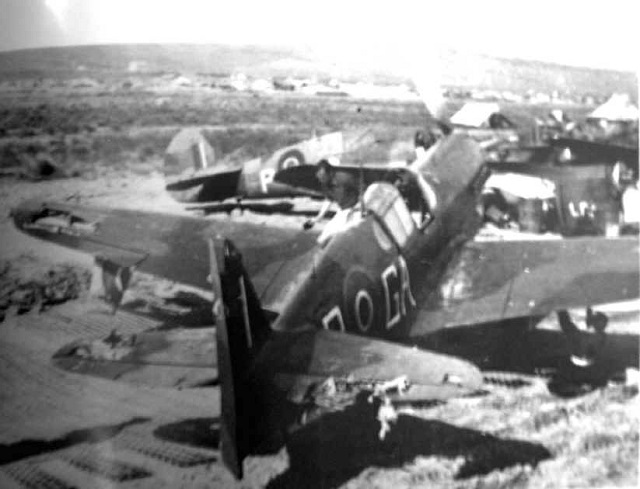
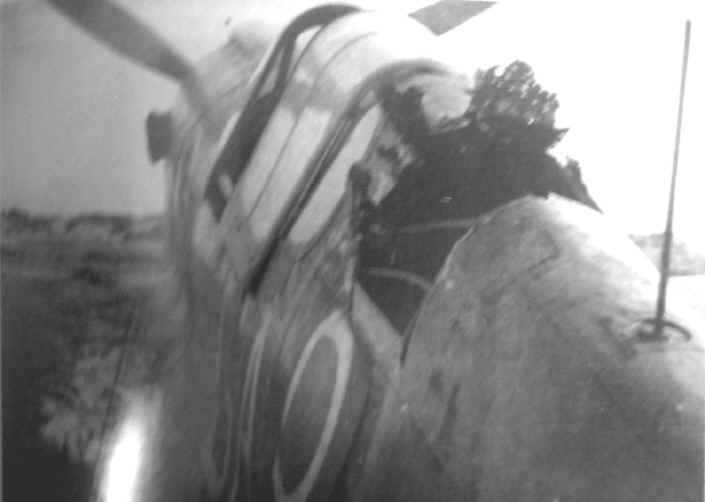
GA-B FT854 had been previously coded as GA-P, Flt LT Neville Ahern's plane shown after the last aerial battle of 112 Sqn RAF over Rieti 4th April 1944. Also damaged in the same fight was FR474 GA-J(inx). Note both carried the temperate colour scheme, not a desert scheme as Kagero drew FR474 in one of their publications.
P.57 Kittyhawk IIA CV-B FS493 F/Lt Dawkins shot up 29th April 1944.
P.66 (top) Another misidentified airframe. This is another Mk.IV (P-40N), you can see the 'N' style canopy if you look. CV-P FX609 5/3/44 - 16/11/44, took part in the last P-40N op by 3 Sqn RAAF on 16/11/44. It was the S/Ldr's airframe flown initially by Rex Bayly and than taken over by Murray Nash when he became C.O (the first CV-P airframe of Nash, before the much more famous P-51s). Yes Blue rudder with Southern Cross and nose art of Black cat and mouse on a White field.
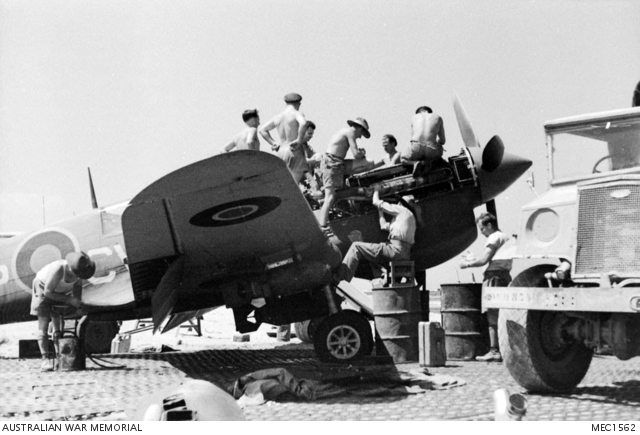

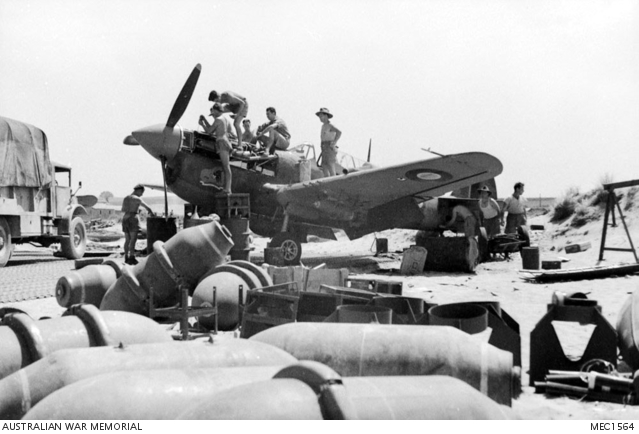
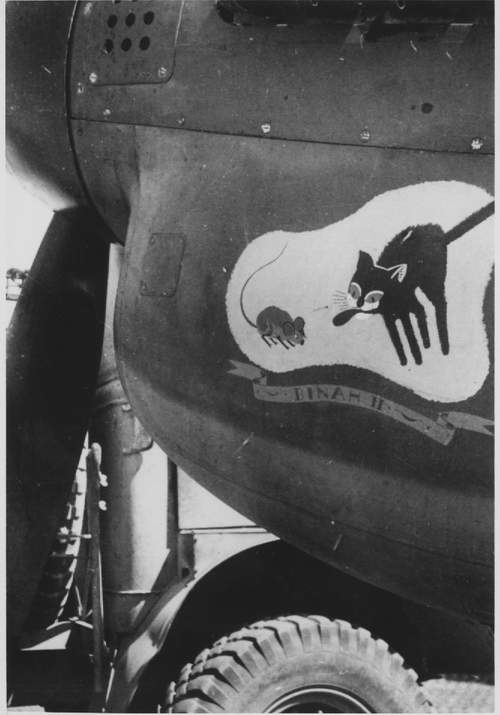
P.67 FX594 (not 554) was used in the UK for trials. It was repainted in the DFS scheme of Dark Green/ Light Grey (mixed Grey)/ Med Sea Grey with Sky fuselage band and spinner. It is painted in what we call a 'loop' pattern in P-51 research. There are several good images of it available.
P.71 Correct serial number for this airframe is FT928 code OK-L. The incident happened in April 1945, there are lots of photos. While under repair at the Sqn, they unofficially clipped the wingtips. Well covered years ago in this publication.
Steve Mackenzie
04 Nov 2024

Profile of GA-B FT854.
Use the index button to return to the main issue 38/4 index.